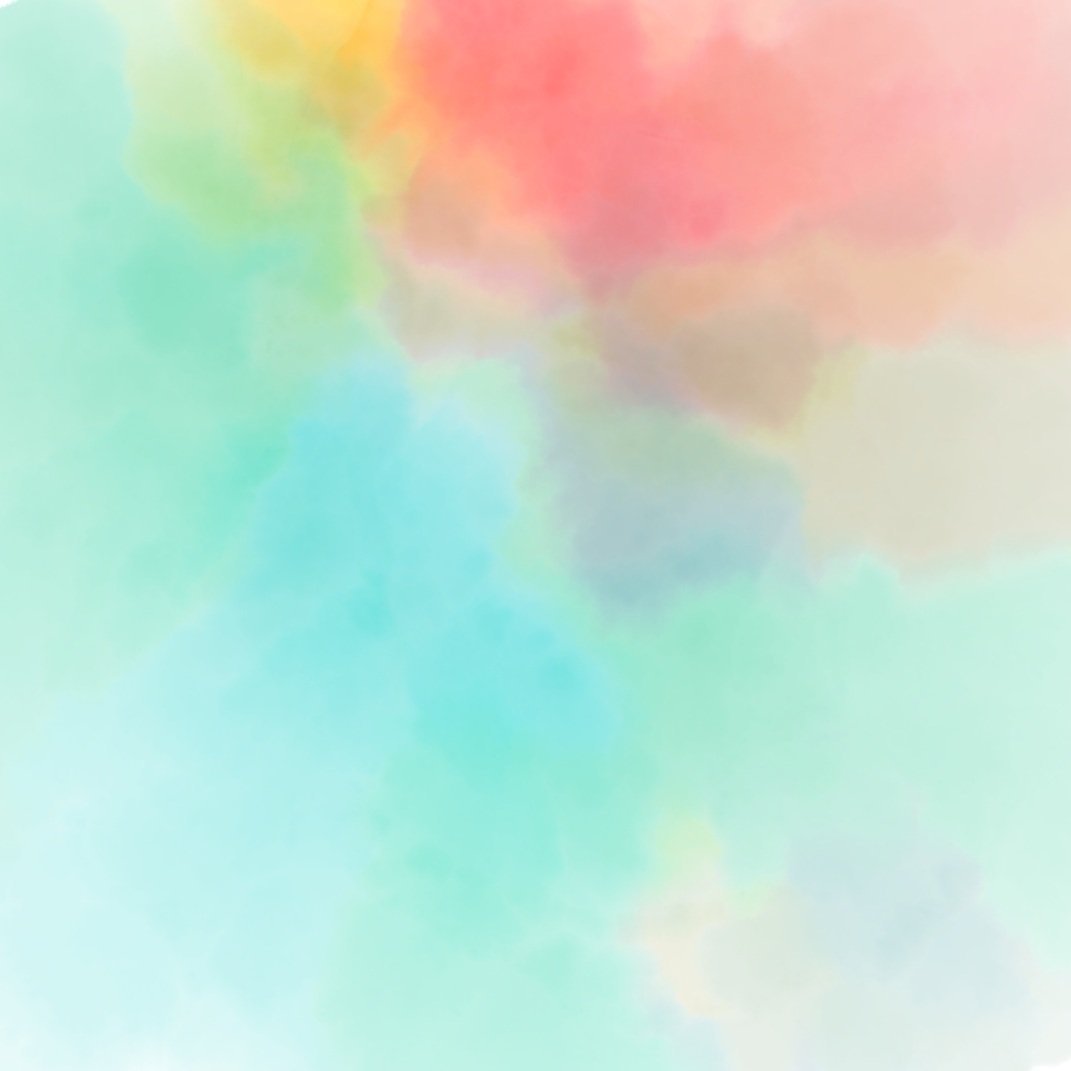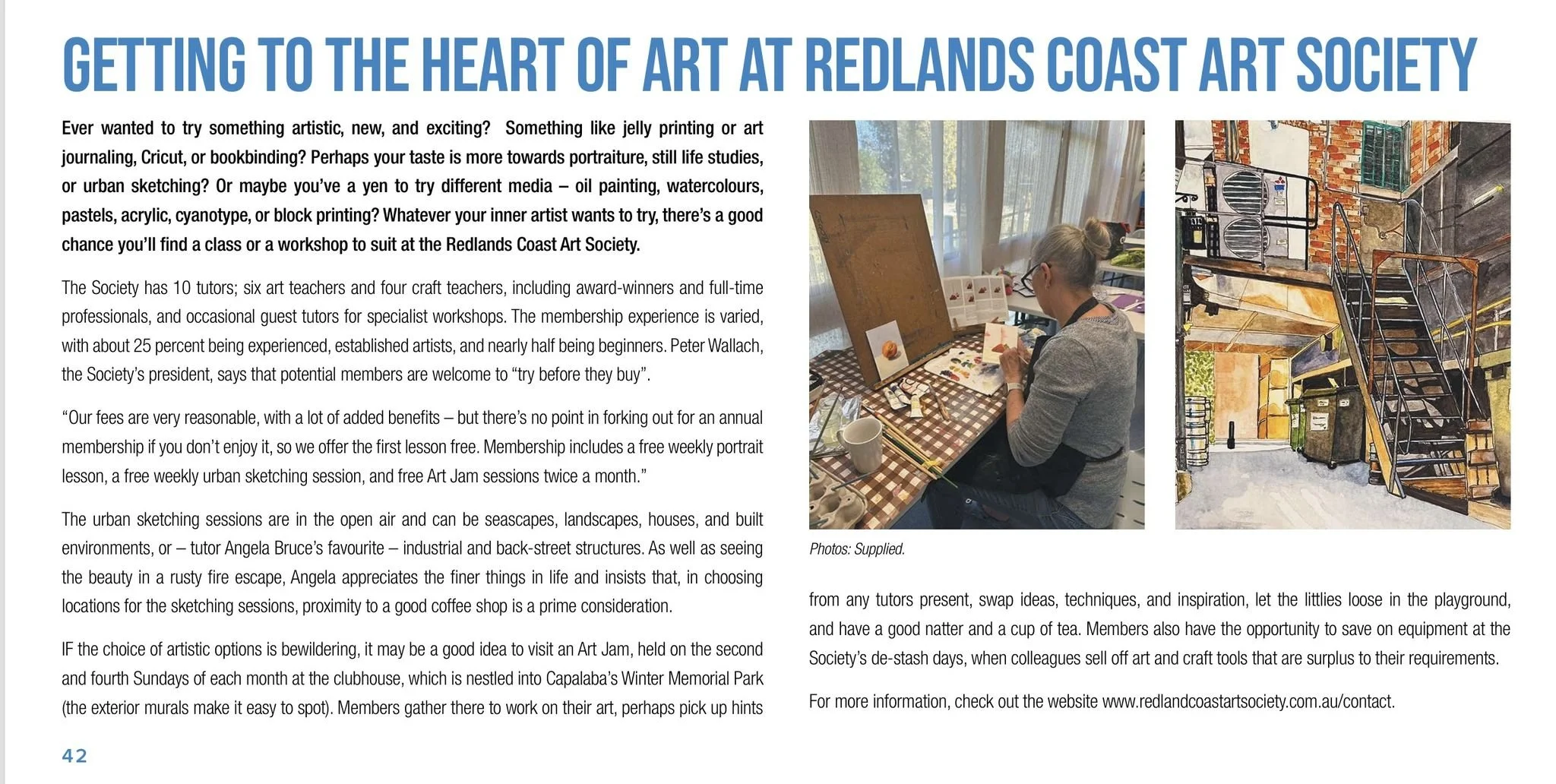
Redland Coast Art Society
Welcome to the
Our gallery/studio is open to the public every second and fourth Sunday of each month from 10am to 3pm. Come and visit us!
〰️
Our gallery/studio is open to the public every second and fourth Sunday of each month from 10am to 3pm. Come and visit us! 〰️
Come and join our welcoming community, where you can explore a world of creativity, have fun and make some friends along the way!
What’s news @ RCAS
From Quantum Chemistry to Bronze Dogs — The Artistic Journey of Katia Strounina
The interview with Katia at the Teachers’ Art Show Opening Night.
- Hi Katia, could you please tell us how and when your artistic journey began?
- I was a child who only drew horses. Still-life compositions with vases and flowers didn’t attract me at all — I honestly don’t know how I survived art school with all those assignments! But I loved composition, because there I could draw whatever I wanted. I also loved sculpture — we worked with clay, though we never fired it.Art was always in me, but I grew up in a family of scientists, in a small town that was essentially a scientific centre. Everyone around me — family, friends, neighbours — were scientists, teachers, or technicians. I simply couldn’t imagine any other kind of profession. So, inevitably, I was directed toward becoming a scientist too, and my art just... went to sleep for a while.- So, you became a scientist. What was your specialisation?
- I graduated in chemistry — first in chemical physics and later in chemical engineering. I worked in quantum chemistry, focusing on material science. My research involved complex methods for normalising and analysing different materials. - At what point did you decide to return to art?
- It happened many years later — about twenty years after I earned my science degree. When I started university, I stopped painting completely. Then came work, family, and immigration. Only when my daughter grew up and went to university herself, I finally had time to return to art. I realised that I knew drawing well, but painting — not really. So, I decided to take classes. I studied for five years at the *Chrome Street Studios* in Brisbane, taking private lessons once or twice a week. We even had visiting artists from the Julian Ashton Art School and sculptors from Italy — it was an incredible experience.- So that was about ten years ago — when your artistic life restarted?
- Exactly. And once I began painting again, it grew exponentially. I started working in oils and fell completely in love with them. I still use acrylics, but mostly for smaller works — like painting on musical instruments or miniatures. I also explored printmaking. I began with woodcut because I love natural materials — the texture and imperfections of wood create such beautiful marks. Later I moved to wood engraving and even tried wood carving. But carving is a very slow process — it can take weeks to finish one piece! Still, I love the tactile nature of it.- Tell us about your dog sculptures — they seem to have a special story.
- Yes, they started quite unexpectedly about three years ago. I was watching our dog, Cherry, climbing over rocks, sniffing around for tiny creatures, and she made these incredible, dynamic poses. I realised that painting couldn’t really capture her movement — only sculpture could. So, I decided to try sculpting her. I started with polymer clay, and it worked beautifully. Later, I cast the first sculpture in bronze — and to my surprise, it won the first prize at the sculpture exhibition! Bronze is amazing to work with, but it’s also very expensive to produce. A small piece can cost around $500 just in materials and casting. That's why I only do bronze when it’s pre-ordered, but it’s incredibly rewarding.- You mentioned earlier your experiments with printmaking — can you tell us more about that?
- I tried different printmaking techniques — linocut, woodcuts, wood engraving, and even electro-etching instead of chemical etching. I like the precision of it, maybe because of my scientific background. There’s also a very specific distinction between woodcut and wood engraving — engraving uses the end grain of very hard woods like boxwood, which gives much finer detail. It’s a slow, meticulous process, but the results are beautiful.- It sounds like your scientific background influences your art process.
- Definitely. Being a scientist taught me to observe nature carefully and understand how materials behave — even pigments and oils. I approach each medium methodically, but also with deep curiosity. And I’ve always loved nature. Some artists try to simplify or abstract what they see, but I find beauty in things exactly as they are — a cloud’s shape, the light on a leaf. For me, that’s the ultimate beauty, and that’s what I want to show. - We’ve also heard you’re an avid gardener.
- (laughs) Yes, I love gardening — especially orchids. Most of the orchids I have are ones I’ve propagated myself. I think it’s all connected — the patience, observation, and care that both gardening and art require. Sometimes I paint the flowers or fruits we grow. There’s always a small debate at home — whether something goes to breakfast or into my still life!- Do horses still appear in your art?
- Yes, I’ve come back to them recently. I used to draw only horses as a child, and I feel like my whole artistic journey has been about becoming skilled enough to paint them the way I see them. I already have a few horse paintings, and I plan to do more.- Could you tell us about your recent and upcoming exhibitions?
- I usually have a solo exhibition every year. Two years ago, I travelled to Europe and took many reference photos — they inspired a whole series of landscape paintings. My next solo show will be at the Richard Randall Studio in the Brisbane Botanic Gardens this coming January. I’ve also been fortunate to receive several awards over the past year — around seven in total — in both painting and sculpture, including a first prize for my dog sculpture.- That’s impressive! Congratulations, Katia! And finally — what’s next for you?
- I’d love to explore ceramics. I don’t have a kiln yet, but I’m planning to use the society’s facilities to start experimenting. I love clay — it’s such a natural, responsive material. Overall, I just want to keep exploring. I work in several mediums — painting, sculpture, printmaking — and I enjoy switching between them. Each medium makes you think differently, see differently. It keeps the creative process alive and exciting.- Thank you, Katia.
- It’s been a pleasure to speak with you and learn more about your journey from science to art, from horses to bronze dogs. Your curiosity, discipline, and love of materials truly shine through in everything you do.





